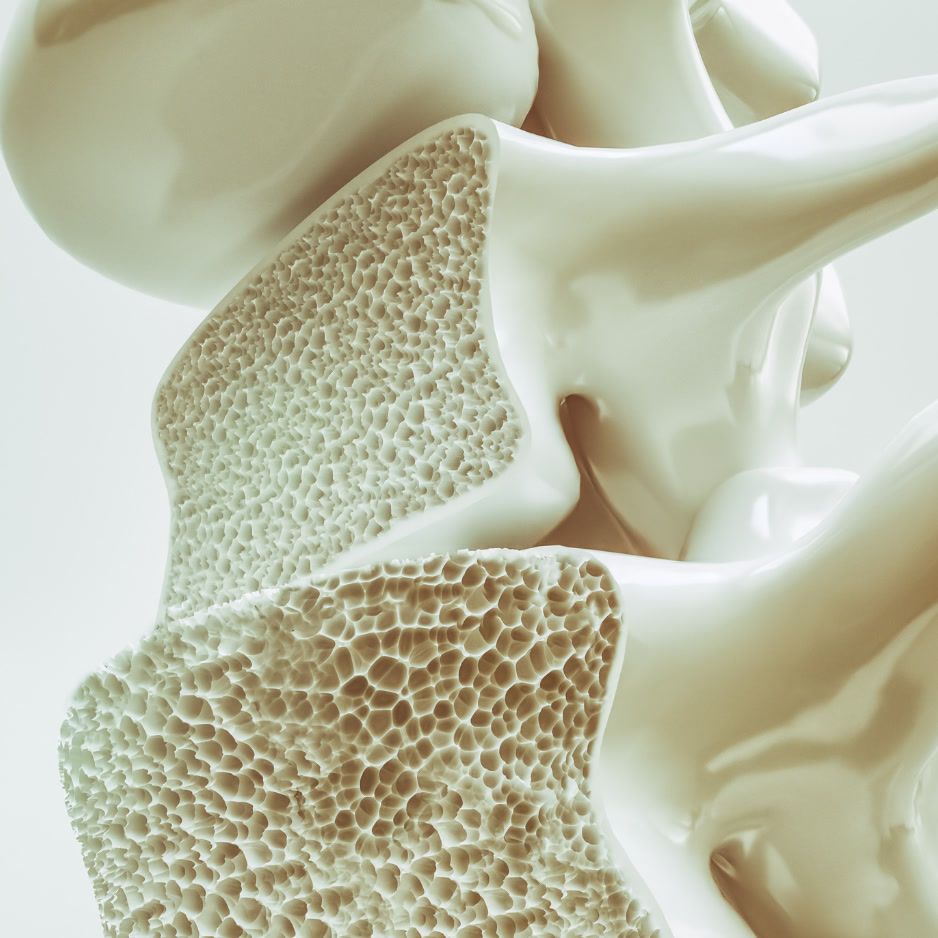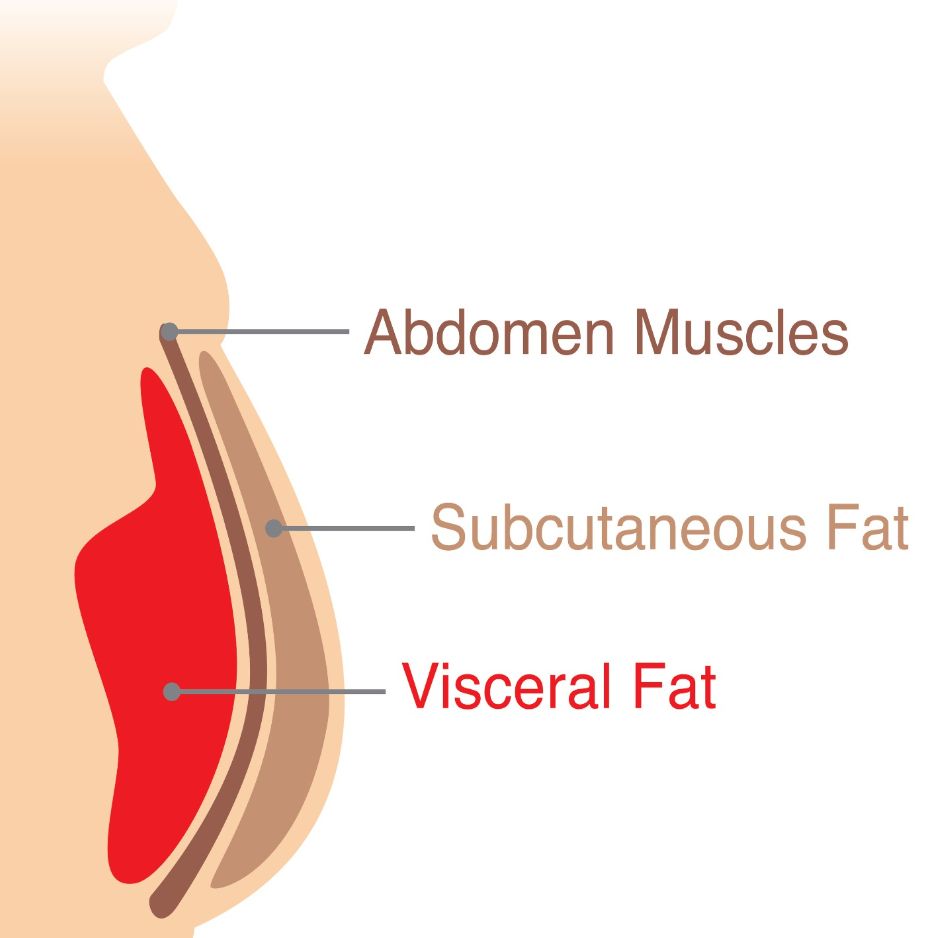How Long to Lose 5 lbs: Timeline and Tips

How Long to Lose 5 lbs: A Realistic Timeline & Tips
Losing 5 pounds of body weight typically takes 2–5 weeks with a safe calorie deficit and consistent habits. Sustainable fat loss usually occurs at about 0.5–2 lbs per week, not counting early water-weight shifts, which aligns with guidance from public-health and medical sources (CDC, Harvard Health, Mayo Clinic).
Use this guide for realistic timelines, simple plans for different lifestyles, and a calculator to set your exact pace.
Quick Answer
- Typical timeline to lose 5 lbs of body weight: about 2.5–5 weeks at 1–2 lbs per week (CDC).
- Early “fast” losses are often water weight, especially in week 1 after cutting carbs/sodium; true fat loss tends to settle into 0.5–2 lbs/week. Mayo Clinic notes a 500-calorie daily deficit often leads to about 0.5–1 lb per week on average (Mayo Clinic).
- Safe calorie deficit range: usually about 500–1,000 calories/day depending on size and activity, but avoid going below about 1,200 calories for most women and about 1,500 for most men unless supervised (Harvard Health).
Want a personalized estimate by date? Try our Weight-Loss-by-Date tool: Weight Loss Calculator by Date.
How Your Timeline Is Determined
The pace you can maintain depends on three levers:
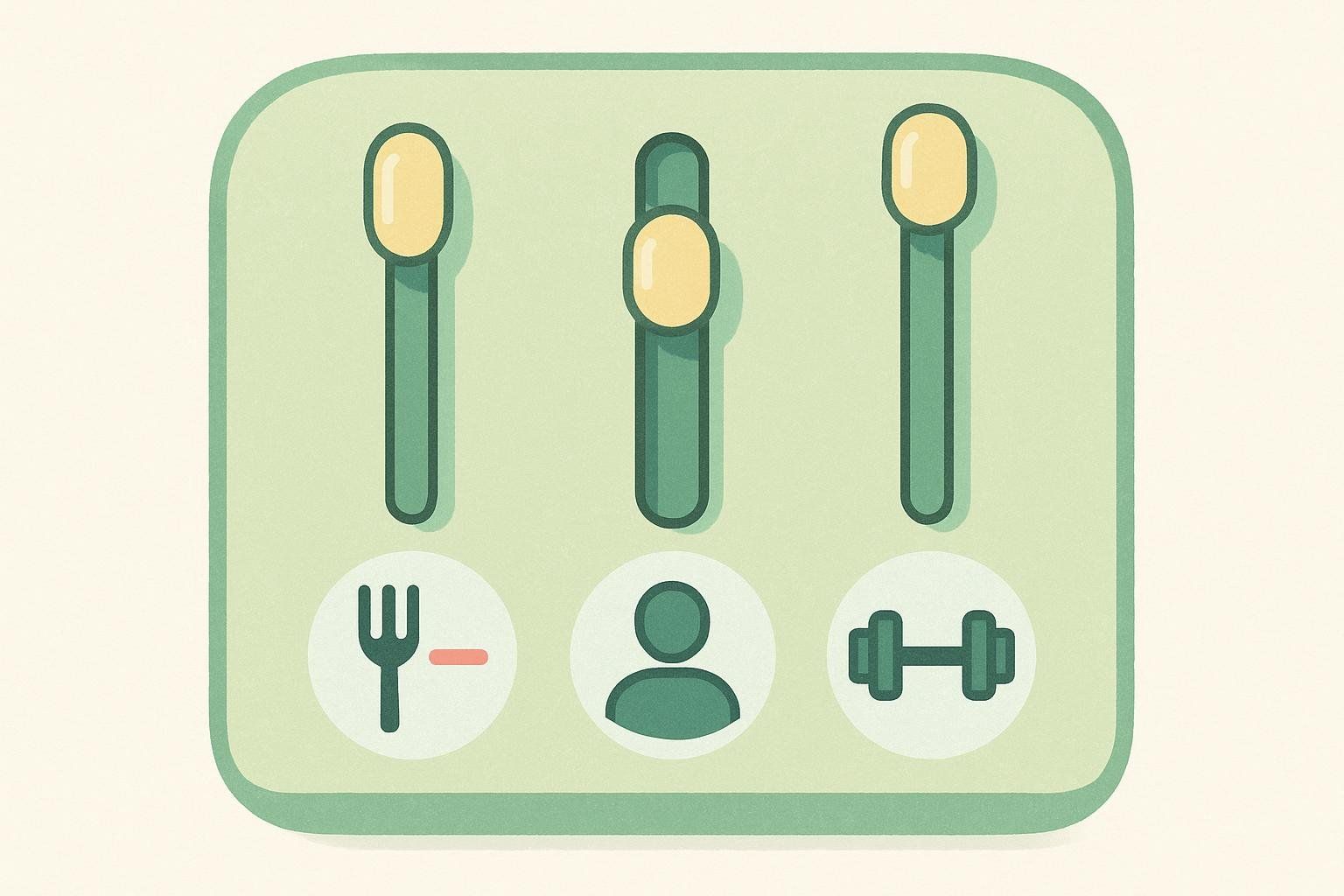
-
Calorie deficit size
Most people create a safe deficit of about 500–1,000 kcal/day to average about 1–2 lbs/week (CDC; Harvard Health). The well-known “3,500 calories per pound” math is only a rough heuristic; actual loss varies with body size, adherence, and metabolic adaptation. Mayo Clinic explains why the 3,500-calorie rule doesn’t hold for everyone (Mayo Clinic), and research shows the rate also depends on factors like starting weight and study length, not just the prescribed deficit (NIH). -
Body size and composition
People with higher starting weight and more lean mass often lose faster at the same calorie deficit because their Total Daily Energy Expenditure is higher (summary in NIH). -
Activity level
Strength training plus moderate cardio raises energy expenditure and helps preserve muscle so more of the weight you lose is fat (Mayo Clinic).
Expert Tip: Recalculate as you progress. As you get lighter, your calorie needs drop. Use our date-based calculator to update targets every about 5% body-weight change: Weight Loss Calculator by Date. You can also reference the NIH Body Weight Planner to see how adaptation shifts your trajectory.
Water Weight vs. Fat Loss (Week 1 vs. Weeks 2–4)
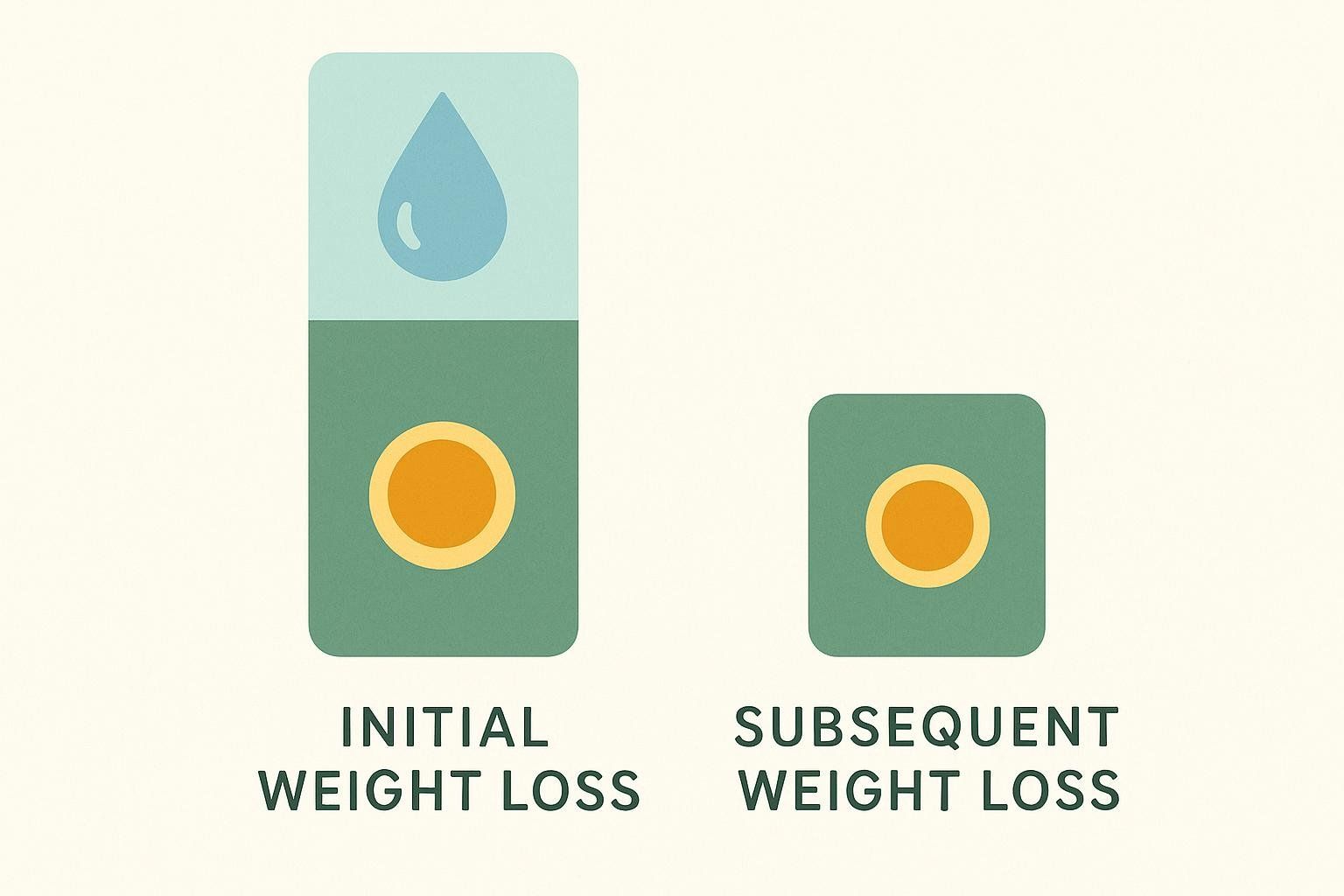
It’s normal to see a bigger drop in week 1—often from glycogen and water changes—followed by steadier fat loss after that. That’s why you might “lose 5 lbs in a week,” but only part of that is fat. Learn how to tell the difference in our explainer: Water Weight vs Fat.
- To verify fat—not muscle—is coming off, pair the scale with tape measurements and progress photos: How to Take Body Measurements.
- For lab-grade clarity, a DEXA scan shows exact fat, lean, and visceral fat changes in minutes: DEXA Body Scan: Complete Guide.
Choose Your 5-lb Plan (2–6 Weeks), Tailored to Your Lifestyle
Pick the scenario closest to you and follow the mini-plan. All options aim for a modest deficit, adequate protein, and time-efficient training.
Plan for Time-Pressed Students (About 2–3 Weeks)
- Target: About 500–700 kcal/day deficit; protein at about 1.6 g/kg; simple meals.
- Training: 20–30 minutes, 4 days/week at home (2 full-body strength circuits + 2 brisk walks or intervals).
- Food tactics: Repeatable meals, high-fiber carbs, lean proteins; one weekly prep session.
- Tools: Quick macro setup and meal ideas: Tracking Macros: A 5-Minute Beginner’s Guide.
Plan for Busy Working Parents (About 3–4 Weeks)

- Target: About 400–600 kcal/day deficit; protein at about 1.6 g/kg; 10-minute prep blocks.
- Training: Three 25-minute sessions/week (2 strength, 1 cardio) + 8–10k steps via “micro-walks.”
- Food tactics: Batch-cook proteins, freezer veggies, pre-portioned snacks; plan family-friendly menus.
- Tracking: Weigh 1–2×/week; measure waist biweekly: How to Take Body Measurements.
Plan for Fitness Enthusiasts (About 3–6 Weeks)
- Target: About 300–500 kcal/day deficit with high protein (1.6–2.2 g/kg); keep heavy lifting 3–4×/week.
- Training: Upper/lower split + 2 cardio sessions; progressive overload.
- Food tactics: Time carbs pre/post training; consider small refeeds if energy dips.
- Learn more: The recomposition playbook: Body Recomposition 101.
Safety note: Avoid going below about 1,200 calories (most women) or about 1,500 (most men) unless supervised, to protect nutrition and lean mass (Harvard Health).
What Does a Weekly Pace Look Like?
A simple view of how a 5‑lb goal can unfold when your average deficit aligns with the safe ranges above.
| Week | Expected change |
|---|---|
| 1 | 1–3 lbs (mix of water + fat) |
| 2 | 0.5–2 lbs |
| 3 | 0.5–2 lbs |
| 4+ | 0.5–2 lbs |

Tip: Average your daily weigh-ins for a weekly number; day-to-day noise can mask true change. Use tape and photos for confirmation: How to Take Body Measurements.
Calculator: Pick Your Date, Get Your Plan
Use our interactive tool to set a target date and get calories/macros tailored to your stats and timeline: Weight Loss Calculator by Date. For a research-grade planner that accounts for metabolic slowing over time, see the NIH Body Weight Planner.
If you want the most precise starting numbers, measure your lean mass with a DEXA scan and use that to set protein and refine calories: Body Fat Percentage DEXA Scan: What It Means and DEXA Body Scan: Complete Guide.
Smart Guardrails and Troubleshooting
- Reassess calories whenever your weight changes by about 5%—lighter bodies burn fewer calories at rest (Mayo Clinic).
- If you stall for 2 weeks, tighten logging accuracy, add 1–2k daily steps, or adjust calories by about 100–150/day.
- If you’re losing more than 2 lbs/week for more than a week or feel run-down, increase calories slightly to protect lean mass and adherence (as the CDC recommends).
- Learn why plateaus happen and how to respond: Metabolic Adaptation: Why Your Weight Loss May Plateau.
The BodySpec Advantage: Measure Change That Matters
Scale weight can’t tell fat from muscle. A BodySpec DEXA scan shows exactly what changed—total fat, regional lean mass, and visceral fat—in a 6–10 minute, low-dose test. Use it to confirm you’re on track and adjust with confidence.
- Book your DEXA scan
- Learn how to prepare for your BodySpec scan to get consistent results.
FAQs
Can I lose 5 lbs in a week?
Sometimes—but it’s usually mostly water from glycogen/sodium shifts and not 5 lbs of pure fat. Sustainable fat loss averages about 0.5–2 lbs/week for most people (CDC).
How many calories should I cut to lose 5 lbs?
A common starting point is an about 500–1,000 kcal/day deficit, which averages about 1–2 lbs/week, though the response isn’t perfectly linear for everyone (Harvard Health; Mayo Clinic).
Is the 3,500-calories-per-pound rule true?
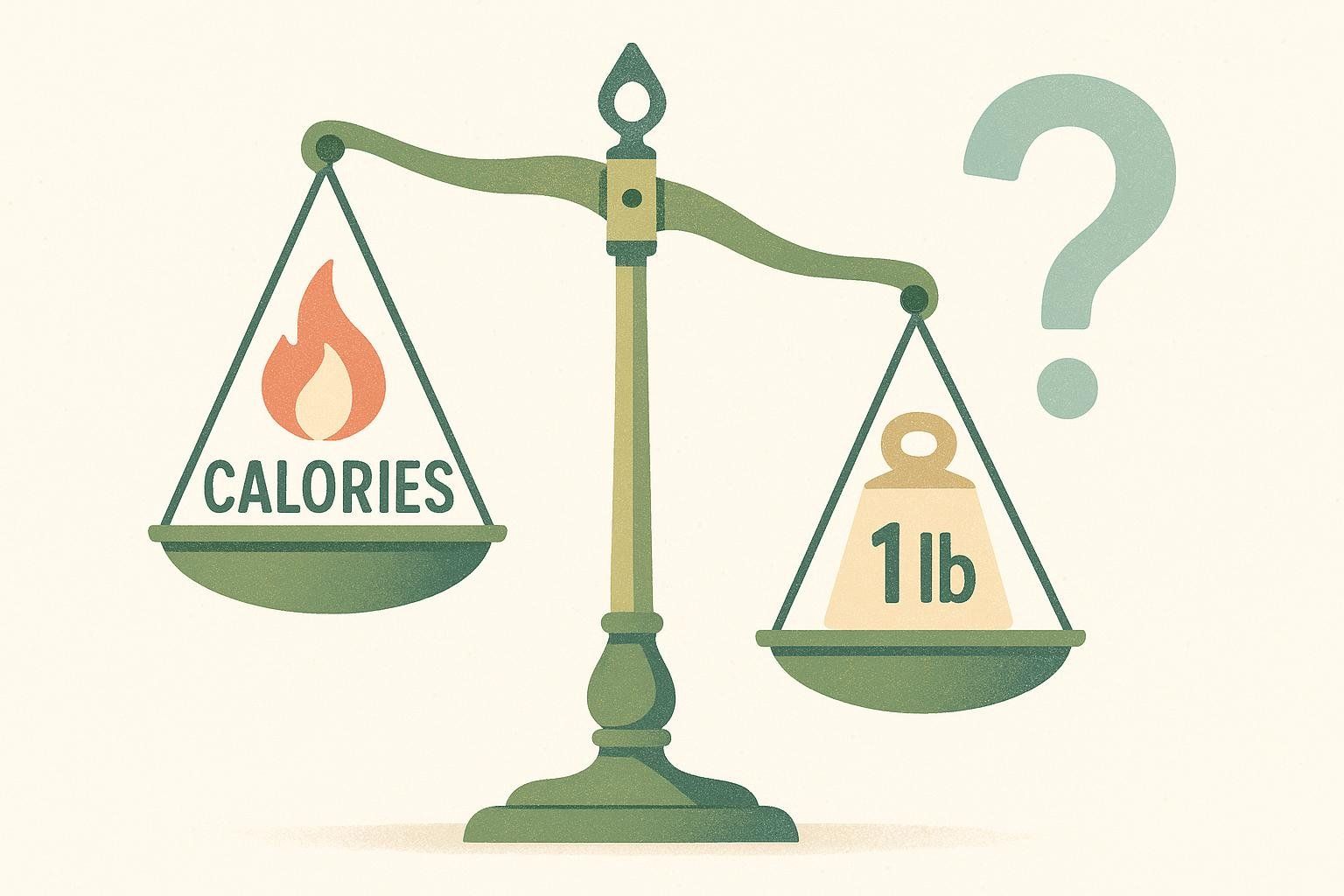
It’s a rule of thumb, not a law. Real-world fat loss varies with physiology and adherence. Mayo Clinic notes the 3,500-calorie idea oversimplifies how the body adapts during weight loss (Mayo Clinic). Research also finds loss rates depend on factors like starting weight and study length, not just the calorie prescription (NIH).
What’s the simplest plan to start today?
- Set a realistic deficit with our Weight Loss Calculator by Date.
- Strength train 2–4×/week and add 2 cardio sessions.
- Hit protein at about 1.6 g/kg.
- Track meals for 1–2 weeks: Tracking Macros: A 5-Minute Beginner’s Guide.
How do I make sure I’m losing fat, not muscle?
Lift regularly, eat adequate protein, and avoid extreme calorie cuts. For verification, schedule a DEXA scan to see precise fat and lean changes: DEXA Body Scan: Complete Guide.
Disclaimer: Educational content only; not medical advice. If you have a medical condition, are pregnant, or are considering very-low-calorie dieting, consult your clinician.
